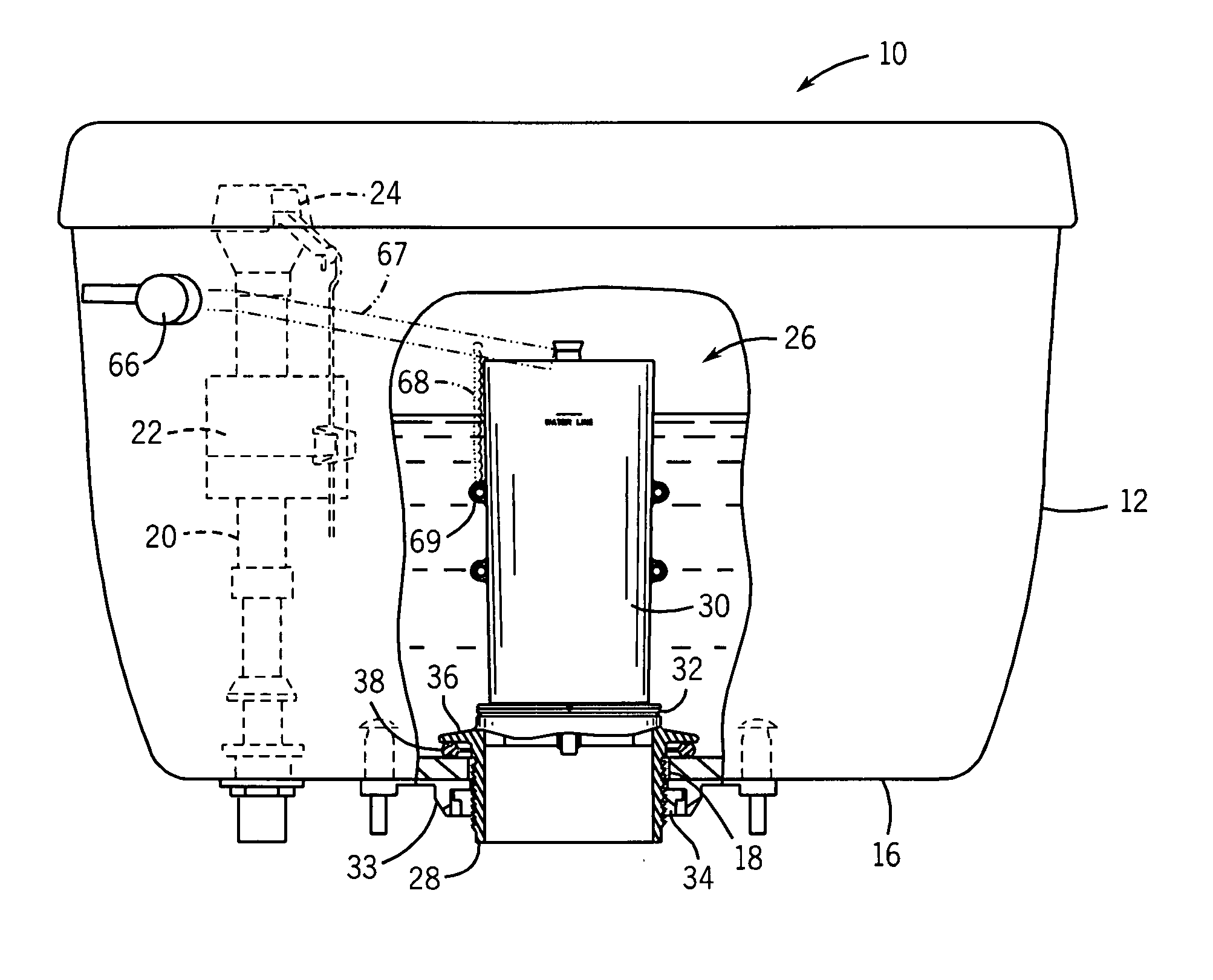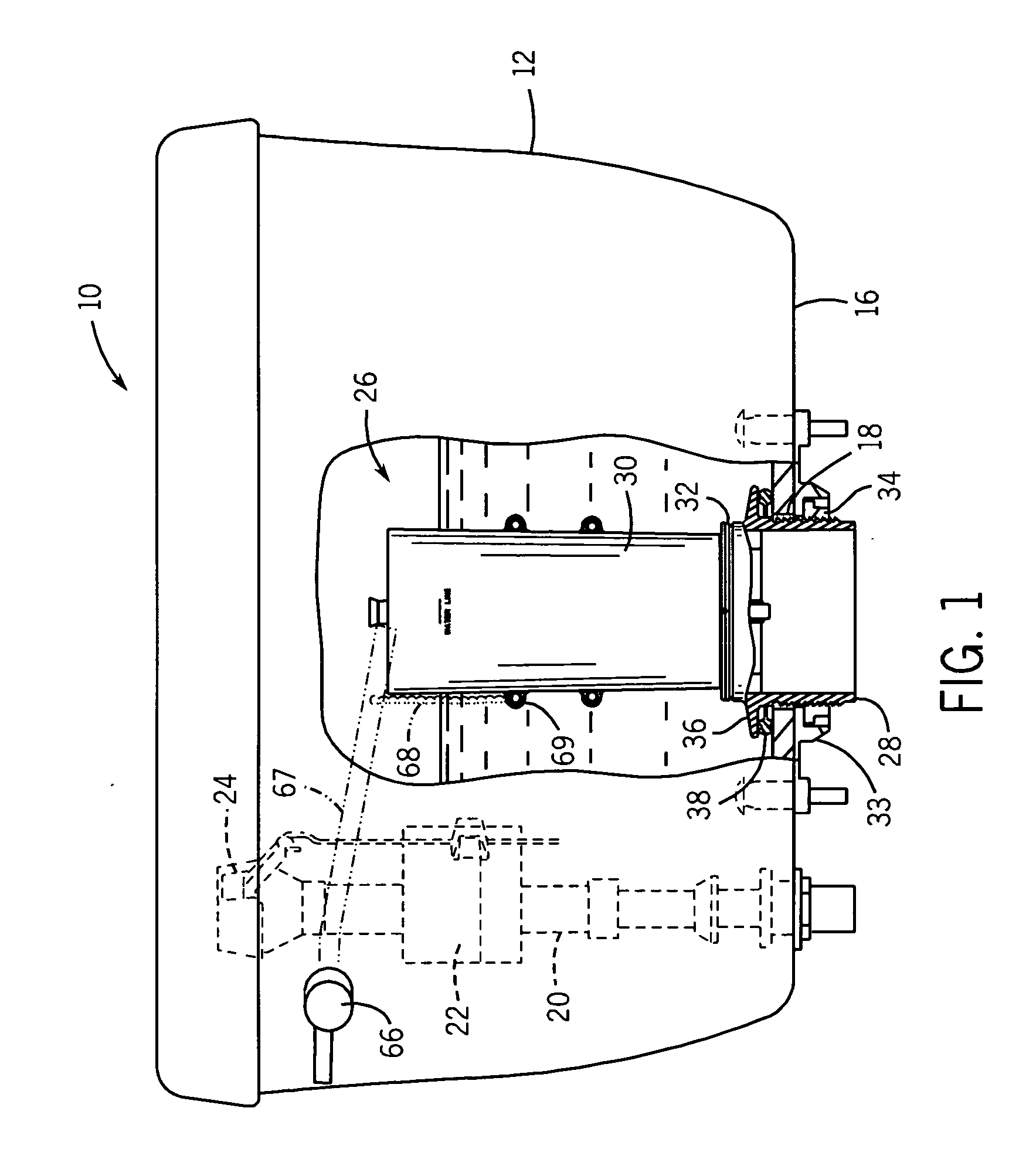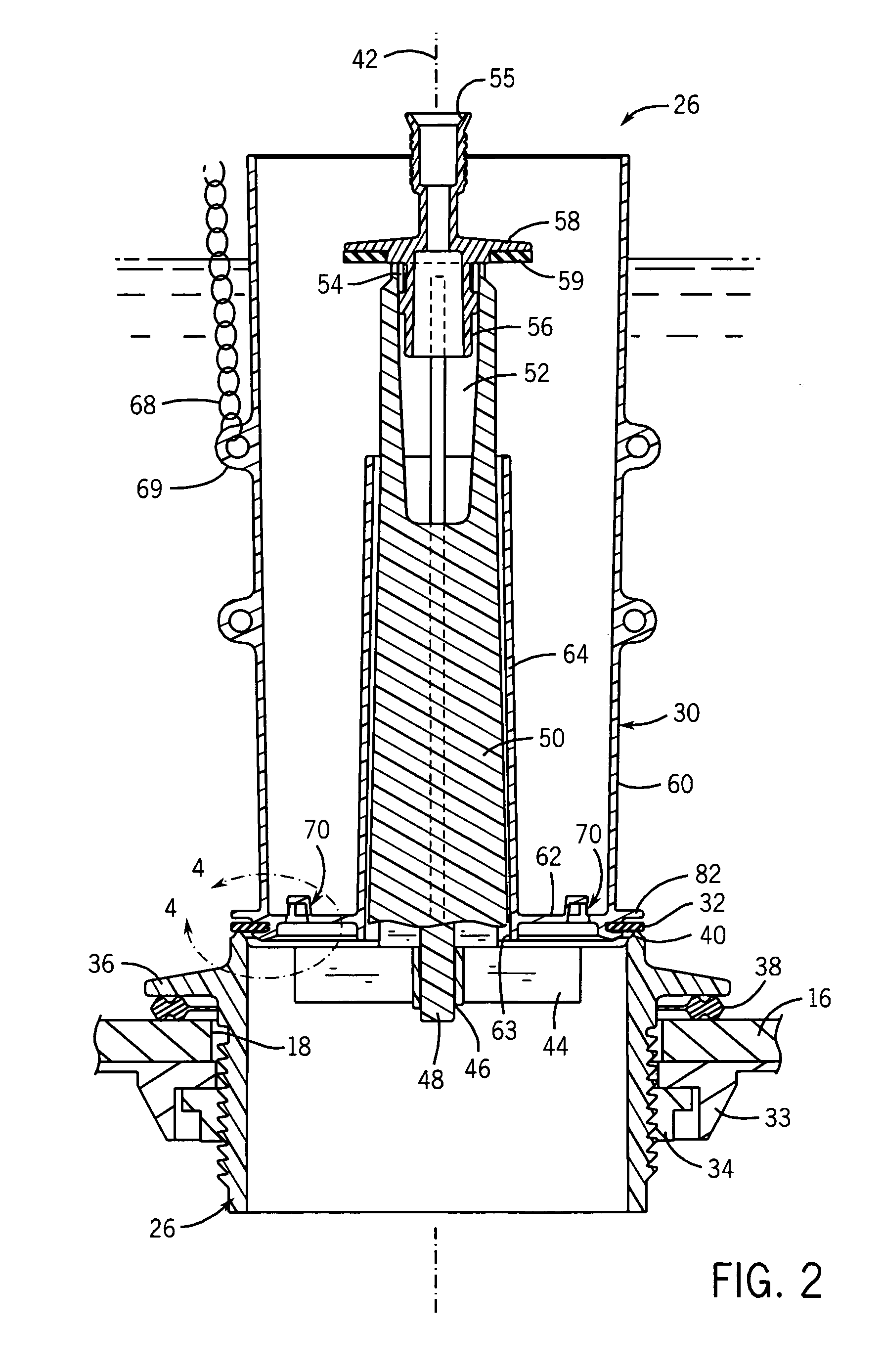Canister flush valve
a technology of flush valve and canister valve, which is applied in the direction of valve member-seat contact, mechanical equipment, functional valve types, etc., can solve the problems of bowl overflow, water draining from the tank, and bowl overflow, so as to improve the control of the valve closure time and reduce leakage
- Summary
- Abstract
- Description
- Claims
- Application Information
AI Technical Summary
Benefits of technology
Problems solved by technology
Method used
Image
Examples
Embodiment Construction
[0039] Referring now to the drawings, FIG. 1 shows a toilet 10 which includes a water tank 12 and a bowl section (not shown). The tank 12 has a horizontal bottom wall 16 with an outlet opening 18, which leads to a channel in an upper rim of the bowl. Mounted inside the tank is the usual water supply pipe 20 with a float 22 operated supply valve 24 for controlling the flow of supply water into the tank 12. A flush valve assembly 26 is mounted inside the tank 12 over the outlet opening 18 to control the flow of water from the tank 12 to the bowl during a flush cycle.
[0040] Referring to FIGS. 1, 2 and 6, the flush valve assembly 26 is mounted vertically upright in the tank 12 and primarily includes a valve body 28, a float 30 and a seal 32. The valve body 28 and float 30 are preferably a non-corrosive material, such as a suitable plastic. The seal can be made of a flexible material, for example a suitable elastomer, such as vinyl, EPDM rubber, or silicon, which has particularly good c...
PUM
 Login to View More
Login to View More Abstract
Description
Claims
Application Information
 Login to View More
Login to View More - R&D Engineer
- R&D Manager
- IP Professional
- Industry Leading Data Capabilities
- Powerful AI technology
- Patent DNA Extraction
Browse by: Latest US Patents, China's latest patents, Technical Efficacy Thesaurus, Application Domain, Technology Topic, Popular Technical Reports.
© 2024 PatSnap. All rights reserved.Legal|Privacy policy|Modern Slavery Act Transparency Statement|Sitemap|About US| Contact US: help@patsnap.com










